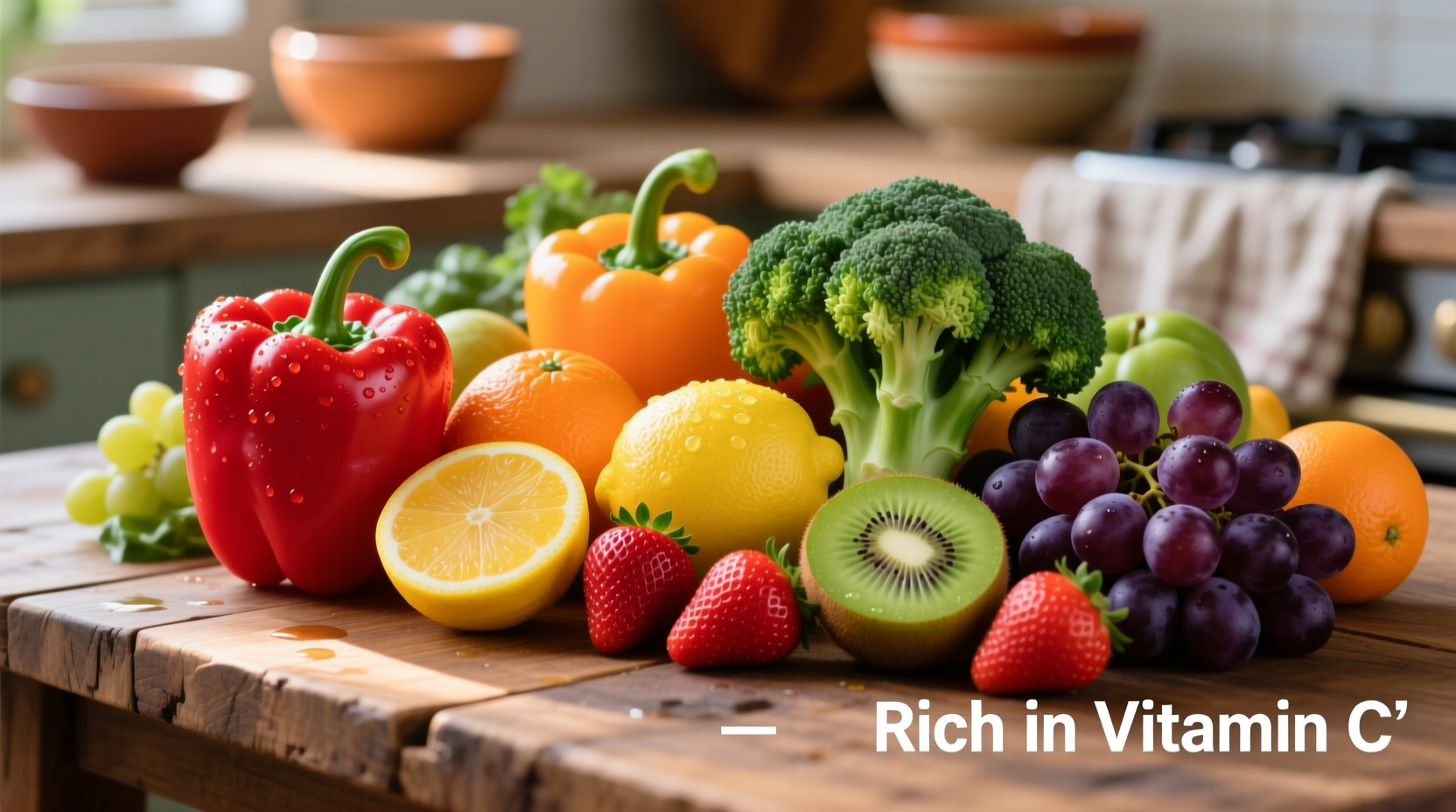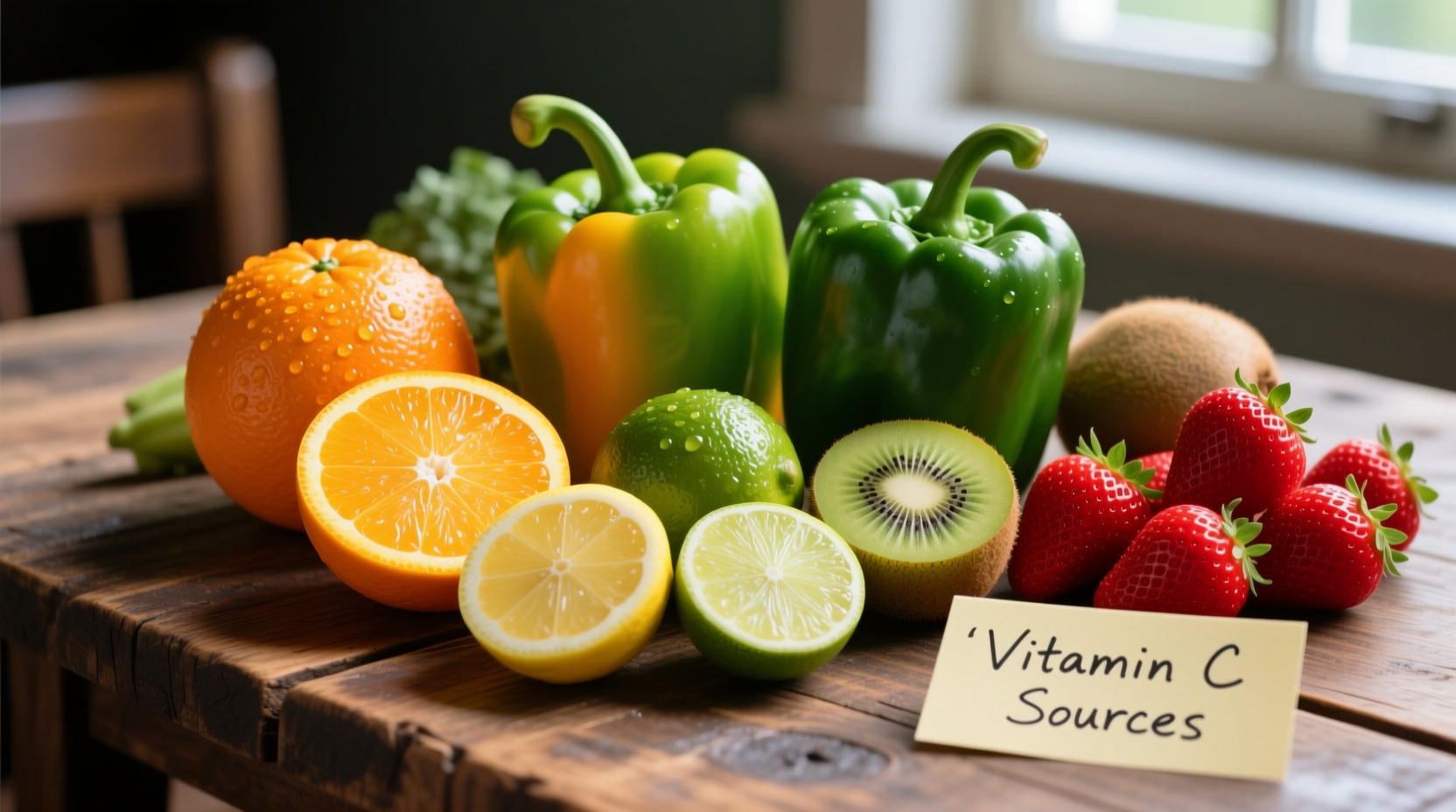Vitamin C, also known as ascorbic acid, is a crucial nutrient your body can't produce on its own. According to the National Institutes of Health, adults need between 75-90mg daily, with smokers requiring an additional 35mg. While oranges are famous for their vitamin C content, many other foods contain significantly higher concentrations. Bell peppers, for instance, provide 190mg per cup—more than triple the amount in an orange. This comprehensive guide reveals the most potent natural sources of vitamin C, backed by USDA nutritional data, and explains how to incorporate them into your diet for maximum health benefits.
Top Vitamin C Powerhouses You Should Know
When searching for what food has vitamin c, most people immediately think of citrus fruits. However, several less obvious options deliver substantially higher concentrations. Understanding these superior sources can transform your nutritional strategy, especially during cold and flu season when immune support becomes critical.
| Food (100g serving) | Vitamin C (mg) | Daily Value % | Best Eaten |
|---|---|---|---|
| Guava (raw) | 228 | 253% | Raw with seeds |
| Yellow Bell Pepper | 184 | 204% | Raw or lightly cooked |
| Kale (cooked) | 120 | 133% | Steamed |
| Broccoli (cooked) | 89 | 99% | Steamed |
| Orange | 53 | 59% | Raw |
Data source: USDA FoodData Central
Unexpected Vitamin C Sources Beyond Citrus
While oranges and lemons dominate the conversation about vitamin C foods, several less celebrated options actually contain higher concentrations. Kiwifruit, for example, delivers 93mg per 100g—nearly double that of oranges by weight. One medium kiwi provides 71mg of vitamin C, making it an excellent portable snack. Strawberries offer 59mg per 100g and contain ellagic acid, which works synergistically with vitamin C to enhance antioxidant effects.

Maximizing Vitamin C Absorption from Your Food
Knowing what food has vitamin c is only half the equation—understanding how to preserve and maximize absorption is equally important. Vitamin C is water-soluble and sensitive to heat, light, and air exposure. When preparing vitamin C-rich foods:
- Eat fruits and vegetables raw whenever possible for maximum nutrient retention
- If cooking, use minimal water and short cooking times (steaming preserves more vitamin C than boiling)
- Store cut fruits with a squeeze of lemon juice to prevent oxidation
- Pair vitamin C foods with iron-rich plant foods to enhance non-heme iron absorption
According to research published by the Harvard T.H. Chan School of Public Health, cooking methods significantly impact vitamin C retention. Boiling broccoli can reduce its vitamin C content by up to 50%, while steaming preserves nearly all of it.
Vitamin C Needs Across Different Life Stages
Your vitamin C requirements vary based on age, gender, and lifestyle factors. The National Institutes of Health provides these daily recommendations:
- Adult men: 90mg
- Adult women: 75mg
- Pregnant women: 85mg
- Nursing mothers: 120mg
- Smokers: Additional 35mg
Special populations have unique considerations. Athletes may require more vitamin C to combat exercise-induced oxidative stress. People with certain medical conditions like malabsorption disorders might need higher intake. Always consult with a healthcare provider for personalized recommendations rather than relying solely on general guidelines.
Practical Ways to Boost Your Daily Vitamin C Intake
Incorporating vitamin C-rich foods into your daily routine doesn't require dramatic dietary changes. Try these simple strategies:
- Add sliced bell peppers and broccoli to your morning omelet
- Blend a morning smoothie with strawberries, kiwi, and kale
- Snack on guava or papaya between meals
- Use lemon or lime juice as a dressing for salads instead of vinegar
- Add fresh herbs like parsley and cilantro to finished dishes
These practical approaches answer the common question about what food has vitamin c while providing actionable solutions. Remember that variety matters—rotating different vitamin C sources ensures you benefit from the full spectrum of phytonutrients each food provides.
Preserving Vitamin C in Your Kitchen
Storage and preparation techniques significantly impact the vitamin C content of your food. Follow these evidence-based tips:
- Buy seasonal produce for maximum nutrient density
- Store cut fruits in airtight containers in the refrigerator
- Avoid soaking vegetables in water before cooking
- Cook vegetables quickly with minimal water
- Consume freshly cut produce within 24 hours for optimal vitamin C levels
Research from the Journal of Food Science shows that proper storage can preserve up to 90% of vitamin C content in cut fruits for 24 hours, while improper storage can lead to 50% loss within the same timeframe.











 浙公网安备
33010002000092号
浙公网安备
33010002000092号 浙B2-20120091-4
浙B2-20120091-4